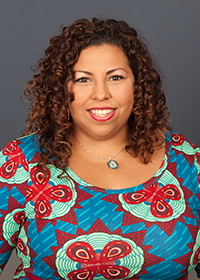The Gist:
- For access to federal financial aid for the 2022-23 school year, you need to submit the Free Application for Federal Student Aid, or FAFSA.
- Apply early, because states and schools have limited amounts of financial aid available, and some of it is awarded on a first-come, first-served basis. Make sure to create your Federal Student Aid ID (or FSA ID, for short). If you already have one, make sure it’s updated with the right contact information.
- Gather all the items on your FAFSA checklist to make applying a quicker, easier process.
- For students applying to college, make a list of the school codes for your top 10 college choices.
For a chance to receive federal scholarships, grants, loans, and work-study opportunities, you have to complete and submit the FAFSA. And if you want the best chance at the most financial aid money, you need to submit it early.
To hit the ground running on October 1st, there are a few key things to do.
Step 1: Create or update your FSA ID
The first step to getting ready to complete the FAFSA is creating your Federal Student Aid ID (if you don’t already have one).
Your FSA ID will act as your unique identifier for all things related to your federal financial aid. It’s like any other account you have online, but you can only have one FSA ID. You can also electronically sign your application with your FSA ID.
To create your FSA ID, you’ll need to provide your social security number, cell phone number, and email address. Use your own information to create an FSA ID, not your parents’ or guardians’ information. If you’re a dependent student, your parent will also need to create their own FSA ID. They’ll use their Social Security Number and demographic information to complete the process.
For more guidance on creating your FSA ID, check out this quick video from Federal Student Aid!
If you already have an FSA ID, just be sure to log in and check if your contact information and address are still correct before the FAFSA drops on October 1st.
Step 2: Collect all your essential documents
Once you have (your FSA ID, it’s time to prepare all the documents you need to complete the FAFSA.
The FAFSA asks for a lot of information. Having the right documents at your fingertips can make the application process faster and smoother.
Make sure to have the following FAFSA checklist items ready:
- Your FSA ID.
- Your Social Security number (SSN). If you’re not a U.S. citizen, you’ll need your Alien Registration number instead.
- Your parents’ information, if you are a dependent student. If your legal parents are married to each other, or are not married to each other and live together, you should report information about both of them on your FAFSA form. Here’s more info on what to include about your parents on the FAFSA.
- Your driver’s license or any other state-issued form of identification, if you have one.
- Your income tax information for 2020 (and your parents’ or guardians’ income tax information if you’re a dependent). This includes federal income tax returns, W-2s, and other records of money earned.
- Your banking information (and your parents’ or guardians’ banking information if you’re a dependent). This includes checking and savings account balances, interest income, investments, and other assets.
- A list of schools you’re interested in attending.
That last item in the list leads to the next step…
Step 3: Make a list of schools to send your FAFSA results to
If you’re a returning student, you won’t need to worry about this step. However, if you’re applying to schools and this is your first FAFSA, then this step is crucial.
When you submit your FAFSA, you’ll be asked to provide the school codes of up to 10 schools to which you’d like to send your FAFSA results. If you’re accepted to any of the schools on your FAFSA list, those schools will then send you financial aid offers.
If you know the names of the schools you’re interested in attending, you can use FSA’s Federal School Code Search tool to find their school codes.
Step 4: Remember to sign and submit
The last step in completing the FAFSA is actually signing your application. The fastest way to get your FAFSA form processed is to electronically sign your application with your FSA ID.
Remember, if you’re a dependent student, your parent will also have to create an FSA ID to sign the FAFSA. If your parent is unable to sign electronically with an FSA ID, then you can mail in a signature page.
Ready… Set… FAFSA!
After taking care of these three steps, you should be well on your way to being FAFSA-ready. For more information on financial aid and what comes after submitting the FAFSA, check out the Applying for Financial Aid section right here on MOSAIEC.
 About Melanie
About Melanie
I am a Financial Coach for college students and parents. I am an Accredited Financial Counselor (AFC®) and received my BBA in Management from Texas State University. I help students understand their financial aid and help them develop a plan to achieve their educational and financial goals. I was a first-generation college student, so I have a personal understanding of some of the struggles students face.
Working in the financial aid industry for 13 years has given me the opportunity to work with students at different points in their life from starting college to graduating and finding a job — all the way through helping them repay their student loans and save for the future.
|
Read this to me
|









